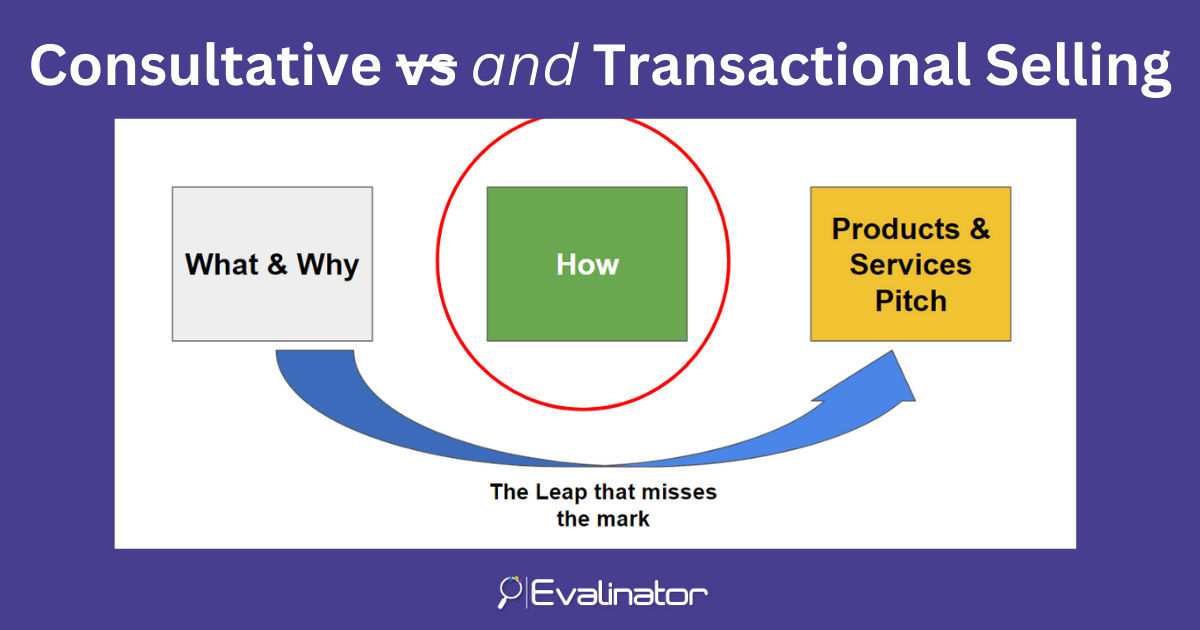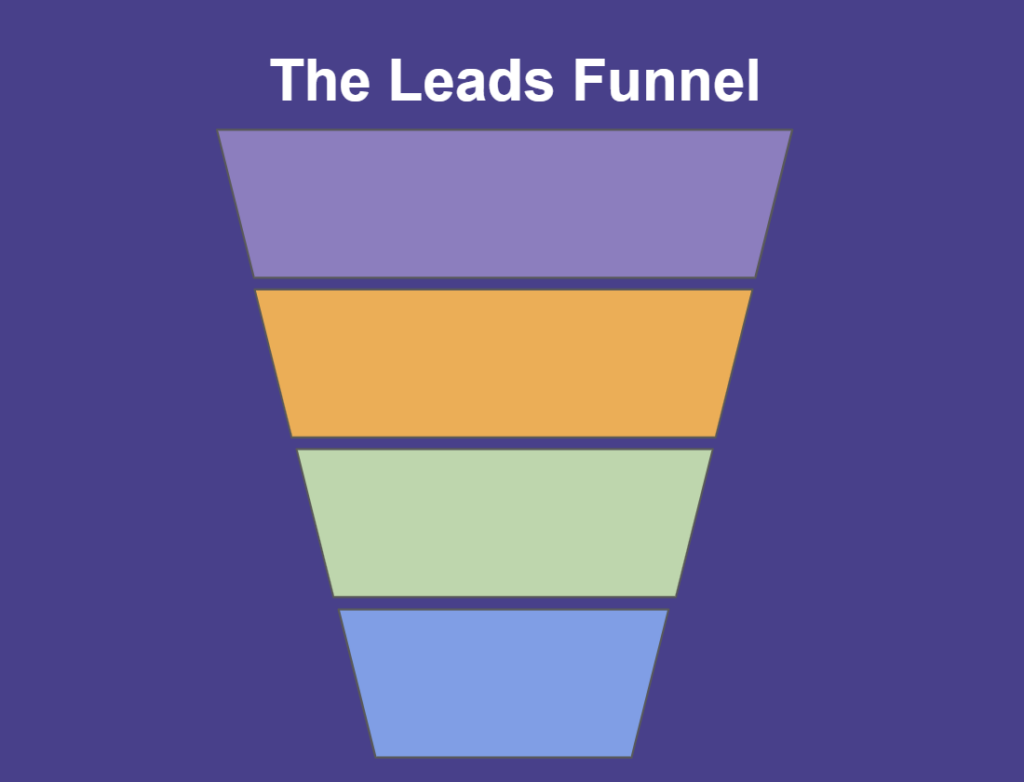


Contrary to popular opinion, the discussion should not be consultative selling vs transactional selling. Rather it should be about balancing consultative selling AND transactional selling
Both types of sales techniques are needed during the sales cycle to successfully engage customers and close the deal.
The latest State of Sales report by Salesforce shows that 87% of buyers expect sellers to act as trusted advisors. The important thing is to be able to bridge the gap between consultative selling and transactional or product selling.
In addition, 70% of sales conversations don’t proceed beyond initial discussions because the clients themselves are not sure what they need – they are looking for clarity.
In this blog, let’s review the two selling techniques and how they converge.
Consultative selling is a customer-centric approach that involves deeply understanding your prospect’s needs, challenges, and goals. You act as a trusted advisor, guiding the customer toward an optimal solution for their specific situation.
For example, imagine you’re selling data management software or service to a business. In a consultative approach, you would first engage in a conversation with a potential buyer about what good data management enables (for business audience) and what it looks like (technology audience). Then you will uncover what they may already have done to address that and the various challenges they faced (dependencies, wrong solutions, legacy technology, duplicate solutions, etc.). You then tailor your product/service presentation to address their needs highlighting specific features that directly solve their problems. You might even build a roadmap with them. Then you use various techniques (references, case studies, pricing, etc.) to close the sale.
Transactional selling, on the other hand, is a more straightforward and direct approach. In this method, the focus is on meeting demand and positioning the products and services you are selling, with less emphasis on in-depth needs analysis.
Consider the same scenario we covered before of selling software to a business. In a transactional approach, the sales process is more direct. Instead of engaging in lengthy consultations, you present your products and services and help them see where it fits. This assumes that the clients have a certain level of clarity about what they want. You then draw a general linkage with the benefits that the client can see. Finally, you encourage the customer to engage and close the sales using various sales techniques. While you may try to understand the customer’s pain and current situation, your process and sales enablement is not geared to support a detailed consultative discussion.
Thus, in transactional selling, by not engaging in a roadmap or clarity discussion based on the 3-step process, we are giving up control of our customer engagement. We are not taking charge. We are leaving it up to the customer to decide how to engage us. That’s a sub-optimal option because customers are struggling too. They will gravitate towards either the party who gives them clarity, or what they are already comfortable with.
Now, you might wonder if one sales method is superior to the other. The truth is, neither is inherently better; their effectiveness depends on the context.
Successful salespeople recognize the need to switch between consultative and transactional selling to keep the sales cycle efficient and productive.
Balancing both approaches ensures that the sales cycle doesn’t drag on indefinitely. Instead, it progresses smoothly, adapting to the customer’s changing needs and preferences. This flexibility helps maintain momentum and increases the likelihood of closing the deal successfully.
Imagine you’re selling marketing services to a potential client. Initially, you take a consultative approach by conducting a thorough needs analysis using Evalinator’s needs assessment tools. You discover that the client’s primary goal is to increase website traffic and generate more leads.
In the consultative phase, you develop a customized marketing strategy, highlighting they can meet these goals. You engage in discussions, answer questions, and provide educational content to build trust and mindshare.
However, soon the focus shifts towards action as the client becomes ready to engage with a solution. So you need to switch from consultative to transactional selling. The client may request specific deliverables or ask for a detailed proposal with pricing and timelines. At this point, it’s essential to switch gears, knowing that you have already created an excellent positioning with the client.
Example 2: Software Sales
Imagine you’re selling software to a business. Your initial approach is consultative, aiming to deeply understand the client’s needs and objectives. You begin by conducting a thorough needs analysis, which reveals that the client’s main goal is to enhance their digital customer experience and use data insights better.
In the consultative phase, you collaborate closely with the client to craft a tailored solution roadmap. To do that you engage in discussions, share case studies, and provide educational content to build trust. As a result of these, you may also nudge them along by suggesting short term actions they should take to get a better grasp on the roadmap. If clients need, you also give them candidate technology stacks to shortlist and consider.
As the relationship matures and trust solidifies, the client and you will need to shift towards a more transactional approach. They may request specific details or a more detailed assessment. In that case you would switch to presenting your services more directly and send them proposals, pricing, delivery timelines, and technical specifications. This shift indicates their readiness to move forward and make a decision.
It’s important to recognize this transition. This transactional selling phase streamlines the decision-making process, as the client now has the necessary information to move forward confidently.
In this way, you effectively merge consultative vs transactional selling tactics to meet the client’s evolving needs. The consultative phase builds trust and aligns the solution with their unique requirements, while the transactional phase provides the essential details for a seamless decision-making process.
This joint adaptive approach ensures that the sales cycle progresses efficiently and increases the likelihood of a successful deal closure.
Next Steps
In conclusion, the debate between consultative vs transactional selling is more a question of when to use which technique. Both of these are valuable techniques in a salesperson’s toolkit.
The sales enablement and the needs assessment tools required for both is different too.
By understanding when to apply each approach and seamlessly transitioning between them, you can optimize your sales process and achieve better results.
Remember that effective selling is about meeting the customer where they are and guiding them toward a solution that benefits them. Starting with consultative selling’s 3 step process sets a broader context and build trust, and then transactional selling methods close the deal as soon as possible for the benefit of both parties.
Read more and get started with 2 weeks free trial of a Needs Assessment.

Feeling frustrated with lead generation?
Take this free, 5-minute quiz and get more prospects into your leads funnel.
Instant Results. Actionable recommendations. Email required.
Find Your Score >>